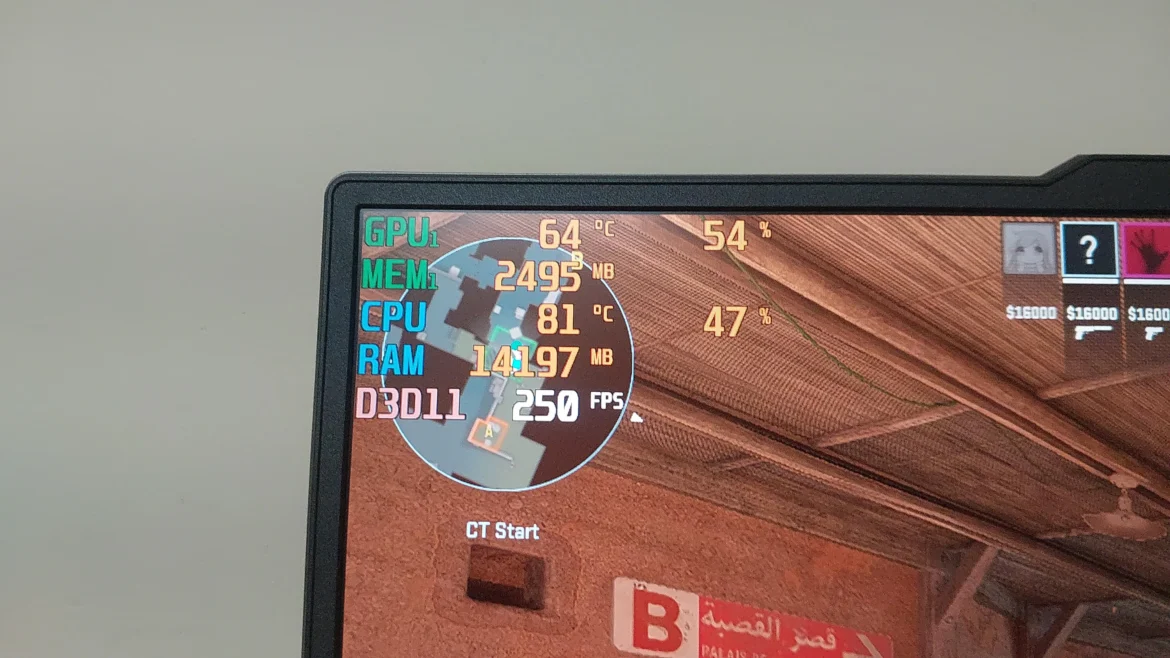Gaming pushes your PC to its limits. High performance means more power usage, and that leads to higher temperatures. If you’re wondering what temp should my CPU be while gaming, you’re not alone. Managing heat is critical to performance, lifespan, and overall stability. In this article, we’ll break down ideal temperature ranges, how to monitor them, and what to do if your CPU is running too hot.
Why CPU Temperature Matters in Gaming
Gaming workloads are intensive. Modern AAA titles utilize multiple cores and threads, pushing your CPU to deliver peak performance. If your CPU overheats, it might throttle or even crash your system. Over time, high temps can degrade components and reduce lifespan.
Keeping your processor cool isn’t just about avoiding crashes—it’s about maintaining consistent frame rates and smooth gameplay. So, what temp should my CPU be while gaming? Let’s dive deeper.
Ideal CPU Temps While Gaming
Safe Gaming Temperature Range
Most modern CPUs are designed to handle temperatures up to 100°C before thermal throttling kicks in. However, you should aim for a much lower temperature during gaming.
-
Ideal Range: 60°C to 80°C (140°F to 176°F)
-
Acceptable but Warm: 80°C to 90°C (176°F to 194°F)
-
Too Hot: Anything above 90°C (194°F+)
While brief spikes above 80°C can be fine, consistent readings over 90°C suggest poor cooling or airflow.
Factors That Affect CPU Temperature During Gaming
1. CPU Model and Architecture
Some CPUs run hotter than others. AMD Ryzen and Intel Core i9 processors often handle higher temps due to their design and boost behavior.
2. Cooler Type
Stock coolers are usually fine for light to moderate gaming, but if you’re running demanding games, an aftermarket air or liquid cooler is worth it.
3. Case Airflow
Good airflow ensures cool air enters your case and hot air leaves. Poor airflow traps heat, raising all internal temps.
4. Ambient Temperature
If your room is hot, your PC will run hotter too. Air conditioning or a fan can help bring ambient temps down.
How to Monitor Your CPU Temperature
There are several reliable tools to keep an eye on your CPU temps in real-time:
-
HWMonitor
-
Core Temp
-
NZXT CAM
-
MSI Afterburner
These tools display temps per core and help you track whether your CPU is within a safe range. Check your temps while gaming or running benchmarks like Cinebench or 3DMark.
What Temp Should My CPU Be While Gaming: A Breakdown by CPU Type
Not every CPU operates the same way. Let’s look at common ranges for different processor families:
Intel Core Series
-
i5 / i7 / i9 (10th–14th Gen): 65°C to 80°C under load is typical. Temps above 90°C indicate poor cooling or high overclocking voltage.
AMD Ryzen Series
-
Ryzen 5 / 7 / 9 (3000–7000 Series): AMD CPUs are efficient but can spike to 85°C–90°C during gaming. Anything consistently above 90°C should be addressed.
Overclocked CPUs
Overclocking increases voltage, which raises heat. With aggressive overclocks, temps of 85°C to 95°C can be expected. Ensure you have premium cooling and thermal paste applied correctly.
Tips to Lower CPU Temps During Gaming
1. Upgrade Your Cooler
Stock coolers work, but they’re not ideal for high-performance gaming. Consider a Noctua air cooler or a Corsair AIO liquid cooler for better heat management.
2. Improve Case Airflow
Add intake and exhaust fans to create a balanced airflow. Clean dust filters and cables that obstruct airflow inside the case.
3. Reapply Thermal Paste
Old or poorly applied thermal paste can reduce heat transfer. Reapply a high-quality thermal paste like Arctic MX-6 every couple of years.
4. Undervolt or Adjust Fan Curves
Using tools like Intel XTU or AMD Ryzen Master, you can slightly undervolt your CPU or adjust fan curves for more aggressive cooling.
Can High Temps Damage Your CPU?
Yes, sustained high temperatures can reduce CPU life over time. Modern CPUs throttle down to avoid damage, but frequent overheating is a red flag. If your CPU hits 95°C or above often, it’s time to act.
What Temp Should My CPU Be While Gaming on a Laptop?
Laptops have smaller cooling systems and often run hotter than desktops. A gaming laptop CPU may reach 85°C to 95°C under load. To manage heat:
-
Use a cooling pad
-
Elevate the rear of the laptop
-
Ensure vents are not blocked
-
Clean dust from vents regularly
If possible, limit frame rates or reduce in-game settings to reduce load.
Final Thoughts: What Temp Should My CPU Be While Gaming?
To sum it up, if you’re asking what temp should my CPU be while gaming, the sweet spot is between 60°C and 80°C. Occasional spikes to 85°C or even 90°C may happen, but staying consistently above 90°C is a concern.
Proper cooling, airflow, and thermal paste application go a long way in managing CPU temps. Monitoring tools help you stay informed and react before problems arise. Keeping your processor cool ensures top performance and extends its lifespan.
Frequently Asked Questions (FAQs)
Is 90°C safe for gaming?
Occasionally, yes. But it shouldn’t be constant. Long periods at 90°C or higher can reduce your CPU’s lifespan.
Should I worry if my CPU hits 100°C?
Yes. At 100°C, most CPUs will throttle to avoid damage. If it happens often, upgrade your cooling or clean your PC.
Does overclocking always mean higher temps?
Yes, especially if voltage is increased. Use quality cooling if you plan to overclock regularly.
Can ambient temperature affect CPU temps?
Absolutely. Hot rooms lead to hot PCs. Air conditioning or better ventilation can help.




